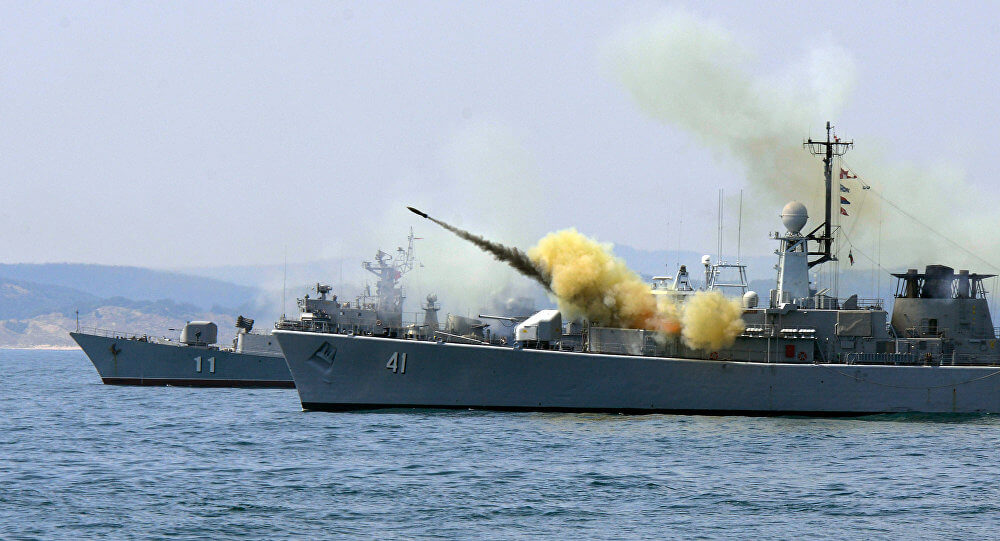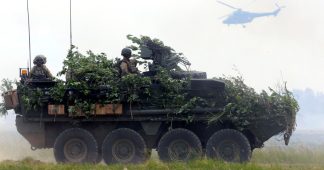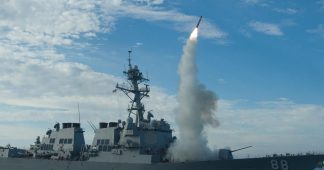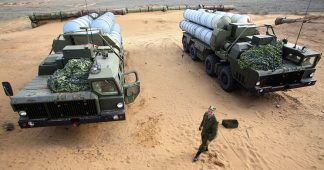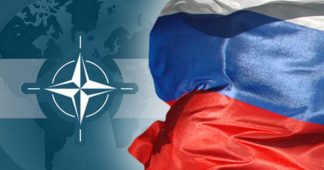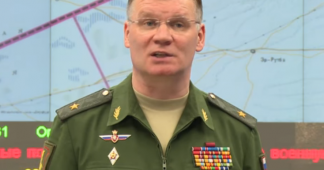By Brian CLOUGHLEY
23.01.2018
In addition to the increasing numbers of troops and aircraft ranged along Russia’s northern borders, the United States continues to deploy missile-equipped warships to the Black Sea, and on January 10 the UK’s Sun newspaper headlined that “US destroyer races to Russia-dominated Black Sea to ‘ensure security and stability’.” The US Navy Times joined in by announcing that “US Navy ruffles Russian feathers in the Black Sea” and Stars and Stripes reported the US 6th Fleet’s Captain Tate Westbrook as saying that “US ships will continue to enter the Black Sea and work with our allies and partners to ensure maritime security and stability,” but nobody gave an example of insecurity.
Indeed, nobody has ever provided evidence of any problems in the Black Sea that require the Pentagon or its NATO sub-office in Brussels to “protect waters of economic and military importance.” (And it is mildly amusing that the US refuses to ratify the UN Convention on the Law of the Sea.)
It was reported on February 16 that “NATO defence ministers have decided to beef up the military alliance’s naval presence in the Black Sea in response to an increasingly aggressive Russia. Secretary-General Jens Stoltenberg said NATO will hold more war games and training in the strategically important sea.” But there has never been an instance of a merchant vessel having been inconvenienced by Russia — just as, in the South China Sea, where the US Navy also indulges in equally provocative antics, there has not been a single case of Chinese interference with any transiting commercial ship.
The propaganda doesn’t stop there. The US Navy Times reports breathlessly that “Russian subs are regularly known to lurk beneath the waves on the East Coast of the United States and regularly in the Mediterranean again, according to multiple sources who spoke to Navy Times on background. Sailors are regularly squaring off with Russian jets when they operate on Putin’s doorstep in the Baltic and Black Sea.”
Ignoring the sneering reference to President Putin, the Navy Times makes a good point : the Baltic and Black Sea are indeed doorsteps to Russia, and it is wise to defend your own doorsteps when they are being used as bases for hostile foreign military deployments.
The Navy Times argues that “While President Trump has expressed interest in repairing US relations with Russia, some analysts say the U.S. must step up its aerial and maritime patrols in response to Russia’s own increase of deployed naval forces in the Black Sea. The increasing prevalence of tension and danger in the area signal that it might be time to get tough.”
So the Pentagon is getting tough and records that since the middle of last year the guided missile destroyers USS Carney and USS Porter conducted five “maritime security operations” in the Black Sea, and the guided missile cruiser USS Huế City held exercises with the Ukrainian navy ship Balta.
According to the US Navy the USS Carney “is equipped with the world’s most sophisticated weaponry systems. She is fitted with missiles that reach extended ranges. Land attack cruise missile strike capability is provided by Tomahawk missiles, which are launched from the MK 41 Vertical Launching System. Additionally, Carney has Harpoon anti-surface missiles.” It’s just the sort of warship that contributes to an atmosphere of stability and security.
It has escaped the notice of the Pentagon and its sub-office in Brussels that Russia has a Black Sea coastline of 800 kilometres, excluding Crimea, and has every right to regard that area as home waters — just as it has every right to sail in and fly over the Baltic.

There’s plenty of aggression, to be sure. But it is entirely by the US-NATO military alliance which at vast expense deploys its combat ships, strike aircraft, ‘Big Guns’ and special forces to countries and seas on Russia’s borders. Why not use all that money to improve mutually beneficial trade arrangements and transport infrastructure? That would be welcomed by Russia and by a growing number of European countries that are disturbed about continual confrontation of Russia by the Pentagon-Brussels military circus. But the big question is : Why does NATO continue its belligerent boogies along Russia’s borders? What benefits can possibly accrue from its bluster?
All was made clear on January 19 when the US Defence Secretary, General James Mattis (he of the infamous “it’s fun to shoot some people” comment about Afghans), declared that “great power competition — not terrorism — is now the primary focus of US national security.”
It’s back to the happy days of the Cold War, when Washington’s military-industrial mafia thrived and expanded — and back to the language of the Cold War in the just-released National Defense Strategy. In this document the Pentagon says its objectives are to “remain the preeminent military power in the world, ensure the balances of power remain in our favor, and advance an international order that is most conducive to our security and prosperity.” One of the ways enabling the Pentagon to achieve this is to “address the arc of instability building on NATO’s periphery”, which would be entertaining were it not so absurd.
After the dissolution of the Soviet Union it wasn’t Russia that increased its military capabilities. It was the US-NATO military alliance that expanded eastwards to Russia’s borders, increasing the number of countries from 16 to 29. There was no Russian threat to western Europe or anywhere else, and the Moscow government was concentrating on the economy, developing natural resources, and improving the living standards of its citizens. These priorities were disrupted by NATO’s first expansion in 1999 when Poland, Hungary and the Czech Republic pushed NATO eastwards. In 2004 there was major success for the Cold Warriors when seven more countries were enlisted in the military alliance and NATO military power moved right up to Russia’s borders.
The pattern was profoundly depressing for Russia, but nothing could be done to halt US-NATO military expansion. The New York Times observed that ceremonies in Washington and Brussels in 2004 marked “the largest expansion in the alliance’s history [which] officially culminated a military integration that began years ago. Lithuania, Latvia and Estonia have all trained with NATO forces, restructured their own forces to NATO standards and contributed soldiers to NATO operations.” It was all part of a very long-term plan.
The BBC reported that “Russian lawmakers have voiced concern about Nato’s eastward expansion to Moscow’s doorstep. A resolution by the lower house of parliament, the Duma, said Russia may reconsider its defence strategy if Nato continued to ignore Moscow’s interests. It urged Nato members to ratify an arms treaty to restrict deployment of weapons near Russia’s borders… The Duma said it would also recommend the government to strengthen Russia’s nuclear deterrent and consider the deployment of additional troops on the country’s western borders.”
The “arc of instability” is not within Russia: it is in the sweep of NATO and NATO-influenced countries surrounding Russia.
The United States stations armed forces in some 800 military bases around the world. Russia has nine overseas bases and has no intention of establishing more. It is Washington that has expanded its global military presence so dramatically and created so much tension and instability. Its forays into Iraq and Afghanistan and its blitz on Libya were catastrophic, but it appears that more wars are being planned.
US-NATO military fandangos in the Black Sea are part of the Pentagon-Brussels policy of poisonous confrontation that is intended to increase in intensity. The world is becoming an ever more dangerous place.
